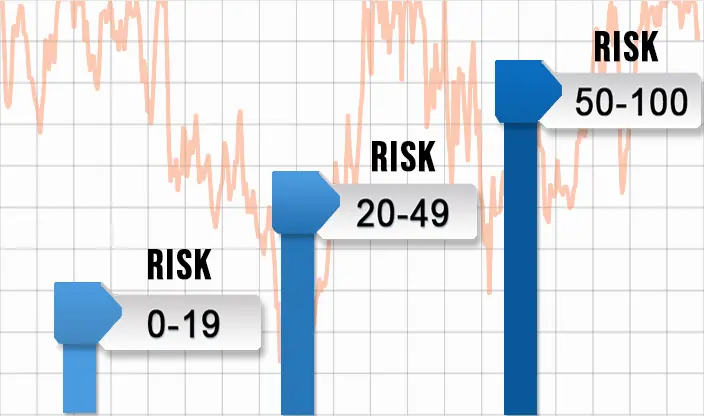How the Top 0.1% Control Volatility
Concierge Wealth Services
How the Top 0.1% Control Volatility
The wealthiest investors don’t attempt to predict market swings—they engineer resilience. The ultra-wealthy view volatility not as a threat, but as a measurable variable to be managed through design, discipline, and structure. Understanding how they achieve stability amid uncertainty offers valuable insight into the difference between speculation and strategy.
1) Volatility as a Systemic Input
Institutional investors model volatility as part of the environment, not a forecast error. The top 0.1% adopt this mindset by designing portfolios that function under multiple regimes, incorporating quantitative risk metrics and stress testing. Rather than trying to eliminate volatility, they aim to contain its impact through diversification, liquidity management, and adaptive rebalancing.
This structured approach is grounded in the same principles described in Quantitative Risk Management—the use of measurable data to define, rather than react to, uncertainty.
2) Portfolio Engineering Over Prediction
The top 0.1% don’t guess where markets are headed. They build adaptive portfolios using multiple sources of return—equities, credit, alternatives, and private assets. By designing each component to respond differently to economic shifts, they ensure the portfolio itself becomes the defense mechanism.
3) The Power of Rules-Based Discipline
Elite investors rely on governance. Rebalancing rules, risk budgets, and documented processes reduce emotional decision-making. When volatility spikes, they act according to policy—not instinct. That distinction transforms volatility from chaos into opportunity, a principle echoed in Institutional-Grade Portfolio Construction.
4) The Behavioral Component
Controlling volatility isn’t only about numbers—it’s also about behavior. The wealthy cultivate patience through structure: clear investment charters, pre-approved rebalancing ranges, and dedicated oversight committees. These safeguards minimize the behavioral biases that can quietly destroy wealth when markets become emotional.
They view volatility as part of the cost of earning returns, not a reason to abandon a plan. That perspective allows them to benefit from others’ mistakes while maintaining focus on long-term compounding.
5) Liquidity as a Shock Absorber
Top investors carefully map liquidity needs years in advance. By holding reserves, short-term instruments, and flexible credit lines, they prevent forced selling during downturns. Liquidity isn’t idle—it’s optionality, the ability to deploy capital when prices dislocate. For context, see What Is Illiquidity Premium?.
6) Alternative Sources of Return
Institutions use strategies that harvest structural inefficiencies—private lending, real assets, or quantitative factors—to balance volatility across cycles. The ultra-wealthy mirror this by aligning with advisers who offer process transparency and diversified exposure, similar to those described in Alternative Investments the Wealthy Use.
7) Turning Volatility Into Strategy
The top 0.1% don’t chase calm markets—they prepare for turbulent ones. Their portfolios are designed with the expectation that volatility will reappear. They maintain quantitative guardrails, liquidity buffers, and long-term governance, transforming what others fear into an engineered advantage.
For qualified investors seeking to understand this approach, An Invitation to Explore More outlines how introductions to independent fiduciary advisers may help evaluate similar frameworks.
Related Topics to Explore
- Institutional-Grade Portfolio Construction
- Quantitative Risk Management
- Alternative Investments the Wealthy Use
- Concierge Wealth Services
Request a Confidential Conversation
📞 Call us at
800-533-5969
Important: We do not provide securities or investment advice. If appropriate, we may introduce you to an independent SEC-registered investment adviser for evaluation under their regulatory framework.
How the Top 0.1% Control Volatility — Frequently Asked Questions
How do the ultra-wealthy manage volatility differently?
They design portfolios around volatility instead of reacting to it, using diversification, liquidity buffers, and rules-based rebalancing.
Do they try to predict market swings?
No. Their process assumes volatility will occur and plans accordingly using predefined policies and quantitative guardrails.
What role does liquidity play?
Liquidity acts as a stabilizer. Maintaining accessible capital prevents forced selling and enables opportunistic deployment during stress.
Can individuals apply these same methods?
Qualified investors can align with fiduciary advisers who apply similar institutional frameworks under SEC oversight.
Does Diversified provide investment advice?
No. Diversified Insurance Brokers does not offer securities or investment advice. Introductions are made only to independent advisers.
Important Notice: All investment advisory services are provided exclusively through our independent SEC-registered adviser partner.
About the Author:
Jason Stolz, CLTC, CRPC, is a senior insurance and retirement professional with more than two decades of real-world experience helping individuals, families, and business owners protect their income, assets, and long-term financial stability. As a long-time partner of the nationally licensed independent agency Diversified Insurance Brokers, Jason provides trusted guidance across multiple specialties—including fixed and indexed annuities, long-term care planning, personal and business disability insurance, life insurance solutions, and short-term health coverage. Diversified Insurance Brokers maintains active contracts with over 100 highly rated insurance carriers, ensuring clients have access to a broad and competitive marketplace.
His practical, education-first approach has earned recognition in publications such as VoyageATL, highlighting his commitment to financial clarity and client-focused planning. Drawing on deep product knowledge and years of hands-on field experience, Jason helps clients evaluate carriers, compare strategies, and build retirement and protection plans that are both secure and cost-efficient.

